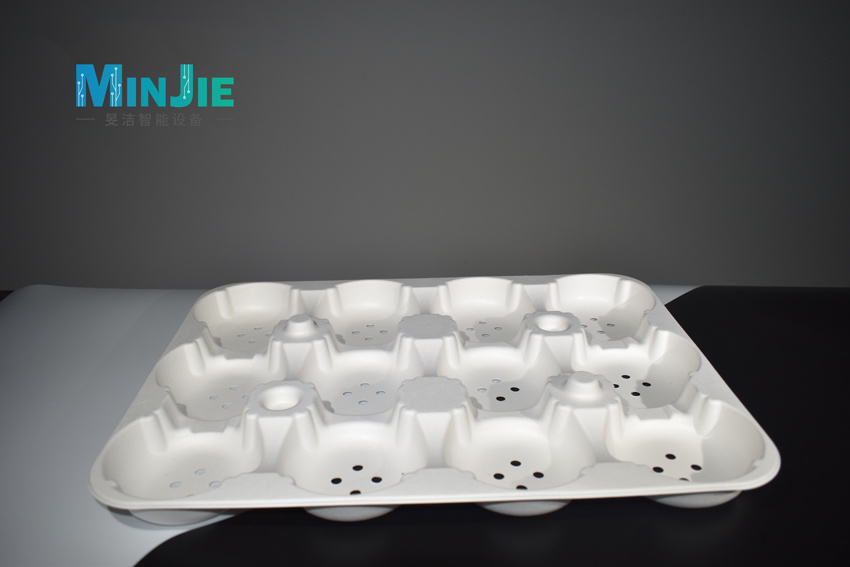
[News]Pulp Molding Packaging: A New Engine for the Green Transformation of the Express Delivery Industry
Release time:
Oct 25,2025
Pulp molding packaging is made from plant fibers (such as waste paper, bagasse, bamboo fiber, etc.) through processes including pulping, molding, and drying. Its characteristics closely align with the needs of express packaging, demonstrating advantages that traditional materials cannot match.
Pulp molding packaging is made from plant fibers (such as waste paper, bagasse, bamboo fiber, etc.) through processes including pulping, molding, and drying. Its characteristics closely align with the needs of express packaging, demonstrating advantages that traditional materials cannot match.
1. Full Lifecycle Sustainability: "Zero Burden" from Production to Disposal
The environmental benefits of pulp molding packaging span its entire lifecycle. At the raw material stage, it primarily uses renewable resources such as waste paper and agricultural byproducts (e.g., bagasse, wheat straw), eliminating reliance on petroleum. This reduces consumption of non-renewable resources and turns waste into valuable products. Pulp molded items are naturally biodegradable—when buried in soil, they decompose into organic matter within 3–6 months, returning to nature. Even when incinerated, they release no toxic gases, emitting only carbon dioxide and water, truly achieving the cycle of "originating from nature, returning to nature."
2. Superior Cushioning Performance: Ensuring "Zero Damage" for Delivered Goods
Turbulence and impacts during shipping are primary causes of product damage. The excellent energy-absorbing and cushioning capabilities of pulp molding packaging effectively address this issue. Through specialized molding techniques, pulp molded products form a microstructure of honeycomb or grid-like pores inside. This structure absorbs significant impact energy and disperses external forces acting on the product. Experimental data shows that the impact absorption rate of pulp molding packaging can exceed 80%, significantly higher than the 65% of plastic foam. Whether protecting fragile electronics (such as smartphones and earphones), precision instruments, or pressure-sensitive fresh produce and cosmetics, pulp molding packaging delivers "precision protection" through customized structural designs. For example, a molded pulp insert designed for smartphones can perfectly fit the device’s contours, with reinforced corners to prevent bumps and scratches during transit.

3. Cost-Effectiveness and Customization: Balancing Economics with Brand Needs
With technological advancements, production efficiency has greatly improved. At scale, its unit price now approaches that of plastic foam. Additionally, pulp molded products are lightweight (10–20% lighter than equivalent-volume plastic foam), reducing weight-based shipping costs and offering long-term savings for businesses. Regarding customization, pulp molding allows for tailored shapes, colors, and textures, and even supports printing brand logos or eco-friendly messages on the surface. This enhances packaging recognition while communicating the brand’s environmental commitment. For instance, a fresh produce e-commerce company uses pulp molded fruit trays that not only secure fruits and prevent crushing but also feature a "biodegradable" label, allowing consumers to directly perceive the brand’s eco-conscious values and thereby improving brand favorability.
Currently, pulp molding packaging is being widely adopted across multiple scenarios in the express delivery industry—from internal product inserts to outer packaging boxes, and from fragile item protection to fresh food preservation. Its application scope continues to expand, establishing it as a vital component of modern packaging systems in the logistics sector.
Relate Blog
undefined
Minjie Eco-Machinery Technology Co., Ltd.
Factory
Tangxia Town, Pengjiang District, Jiangmen City, Guangdong, China
Operation Center
Lihe Science Park, Shishan Town, Nanhai District, Foshan City, Guangdong, China



